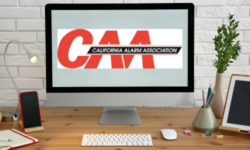Taming the Central Station Operator Training Process
Training operators has helped central stations decrease turnover, increase morale and professionalize operators’ communications with clients. SIA/APCO and NBFAA offer courses and manuals.
Possibly the most famous act at the circus is the ringmaster cracking a whip at a growling lion.
We all know the lion has been trained (and well fed) and knows exactly what to do to appear mean. We know the lion wouldn’t hurt the ring master; however, there’s still that pang of fear that maybe this time …
Training an adult can be as frustrating and disheartening as taming a wild animal, or it can be as easy as “cracking a whip” at an already tame lion. The Security Industry Association (SIA), Association of Public Safety Communications Officials International, Inc. (APCO), Central Station Alarm Association (CSAA), National Burglar and Fire Alarm Association (NBFAA) and several representatives from contract central stations have developed courses and manuals to simplify and make consistent central station operator (CSop) training.
Contract central stations have incorporated this training into their screening and/or hiring processes. When training, emphasis is placed on operator and customer relations, application of systems and software, and peer relations. Some use the certified training of their operators in sales materials.
By utilizing these approaches, contract central stations have simplified and streamlined the training process. Operator turnover has decreased, morale has increased, and the operators have adapted more professional phone skills.
CSop Training Complements Hiring Process
To date, about 573 operators, of which 165 are certified trainers, have completed the SIA/APCO operator training course. Several of the certified trainers utilize the program to maximize their hiring success. In combination with the 90-day probation period, the program has helped decrease turnover by weeding out those unqualified for the position and supplying more opportunities for growth within the central station.
“We use the SIA/APCO program as the backbone of our training,” says David Avritt, president of SentryNet in Greenville, Miss. “We have individualized the program to fit our central station-that’s how the program works.”
The SIA/APCO program is general, covering central station terminology, interpersonal communications, telephone and radio communication, what to do in stressful situations, and alarm signal processing and simulation. It even covers personal hygiene, which it refers to as “the unspeakable topic,” and workspace cleanliness.
Central station managers are generally chosen to attend the 40-hour course to become certified trainers. Then, the trainer brings that knowledge back to the office and incorporates central station-specific topics, such as the software utilized, the way alarms are handled and specific customer service issues.
“The certification process has brought up the level of our central station operators tremendously,” says Avritt. “We run a smoother operation, because everyone is working on the same level from the same book.”
SentryNet has more than 30 SIA- certified operators. It has a full-time SIA-certified trainer, Joyce Parker, who works the various shifts making sure the operators’ response is up to par. Parker does the in-house training when the operator is hired during the 90-day probation period.
“All of our new hires start the training program their first day on the job,” says Peter Rogers, vice president of operations for Alarmguard, Inc. in Orange, Conn.
“We haven’t had anyone fail the SIA test, but we have found there is a direct correlation between how well a person does on the test and how well he does on the job,” says Chris Marino, director of operations for Alarmguard. “If the test score is excellent, they usually are excellent workers.”
At DynaWatch in Hagerstown, Md., the first step with new hires is to give them a drug test and background check (after they’re hired).
Once they pass, one of the company’s trainers who are SIA-certified takes them through the training process, which includes classroom time, on-the-job work with another operator and the continuing training that takes place as software and technology upgrades come into play.
Tom Gifford of Gifford Security and Consulting in Georgia and an NTS committee member, has incorporated the NBFAA’s central station training course in his business. “Since our techs went to the NBFAA training course, things run smoother and faster. I’ve especially seen changes in the area of test signals,” he says. Gifford has witnessed improved communications between technicians and central station operators since the course has helped them see what each other is doing and why each does things a certain way.
“We talk about the paperwork central station operators utilize so there is more understanding. Also, the dialog that takes place in these sessions is excellent. When someone with 25 years of experience shares their knowledge, it’s enlightening,” says Gifford.
Technicians who go through the NBFAA training also can earn continuing education credits (CEUs).
Also included with the NBFAA training manual is a separate, comprehensive security industry dictionary, which includes a false alarm prevention checklist.
Gifford likes the SIA/APCO program as well. “The SIA package is a good concept. I’ve reviewed the book, and I think the NBFAA program compliments it.”
Training Goal Is Reciprocity, Standardization
While central stations are pleased with the immediate strengths and benefits of having operators trained through a structured program, they also are thinking about how it will affect the industry. Individuals who run central stations are hoping this is the first step toward standardizing training and achieving reciprocity between states.
“This will standardize [operators’] interactions with customers and responding authorities,” says Marino. It’s a measure of consistency to have a reference book. It’s an enormous advantage to the industry to have a standard approach to communication between CSops, clients and responding authorities.”
Avritt is on the board of directors of SIA and the chair of the central station monitoring interest group within SIA, as well as a representative to the education committee of NTS. He says, “The goal of the program is to create licensing reciprocity from state-to-state. This is only one element, but it’s a good first step.”
If you enjoyed this article and want to receive more valuable industry content like this, click here to sign up for our FREE digital newsletters!

Security Is Our Business, Too
For professionals who recommend, buy and install all types of electronic security equipment, a free subscription to Commercial Integrator + Security Sales & Integration is like having a consultant on call. You’ll find an ideal balance of technology and business coverage, with installation tips and techniques for products and updates on how to add to your bottom line.
A FREE subscription to the top resource for security and integration industry will prove to be invaluable.







